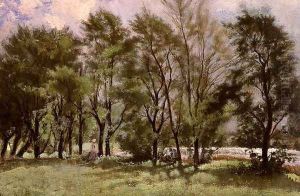Oscar Torna Paintings
Oscar Torna was a prominent Cuban artist, born in 1935 in Havana, Cuba. His artistic journey started at a young age, influenced by the vibrant culture and tumultuous political landscape of his homeland. Torna's work is deeply rooted in the exploration of Cuban identity, blending elements of Afro-Cuban traditions with modern and contemporary art forms. He was part of a generation of artists who emerged in the post-revolutionary period, navigating the complexities of artistic expression under Fidel Castro's regime.
Torna's education in the arts began at the San Alejandro Academy in Havana, where he was exposed to a wide array of artistic disciplines. However, it was his exploration outside the confines of formal education that truly shaped his artistic vision. Torna was known for his experimentation with various mediums, including painting, sculpture, and installation art, each serving as a conduit for his commentary on social, political, and historical themes.
Throughout the 1960s and 1970s, Torna's work began to gain recognition beyond Cuba's borders. His participation in international exhibitions and biennales helped establish him as a key figure in the Latin American art scene. Despite the global recognition, Torna remained deeply connected to his Cuban roots, often reflecting on the island's colonial past, its struggle for independence, and the ongoing impact of its revolutionary history.
In the later years of his career, Torna's work became increasingly introspective, focusing on themes of memory, exile, and the human condition. His ability to convey complex emotional states and narratives through a unique visual language made his work resonate with a wide audience. Torna's contributions to the art world were recognized with numerous awards and honors, cementing his legacy as a pivotal figure in Cuban art.
Oscar Torna passed away in 2021, leaving behind a rich body of work that continues to inspire and provoke. Through his art, Torna captured the essence of Cuban identity, navigating its contradictions and complexities with a profound sense of empathy and insight. His legacy lives on, not only in his artworks but also in his influence on subsequent generations of artists who continue to explore the themes he held dear.
